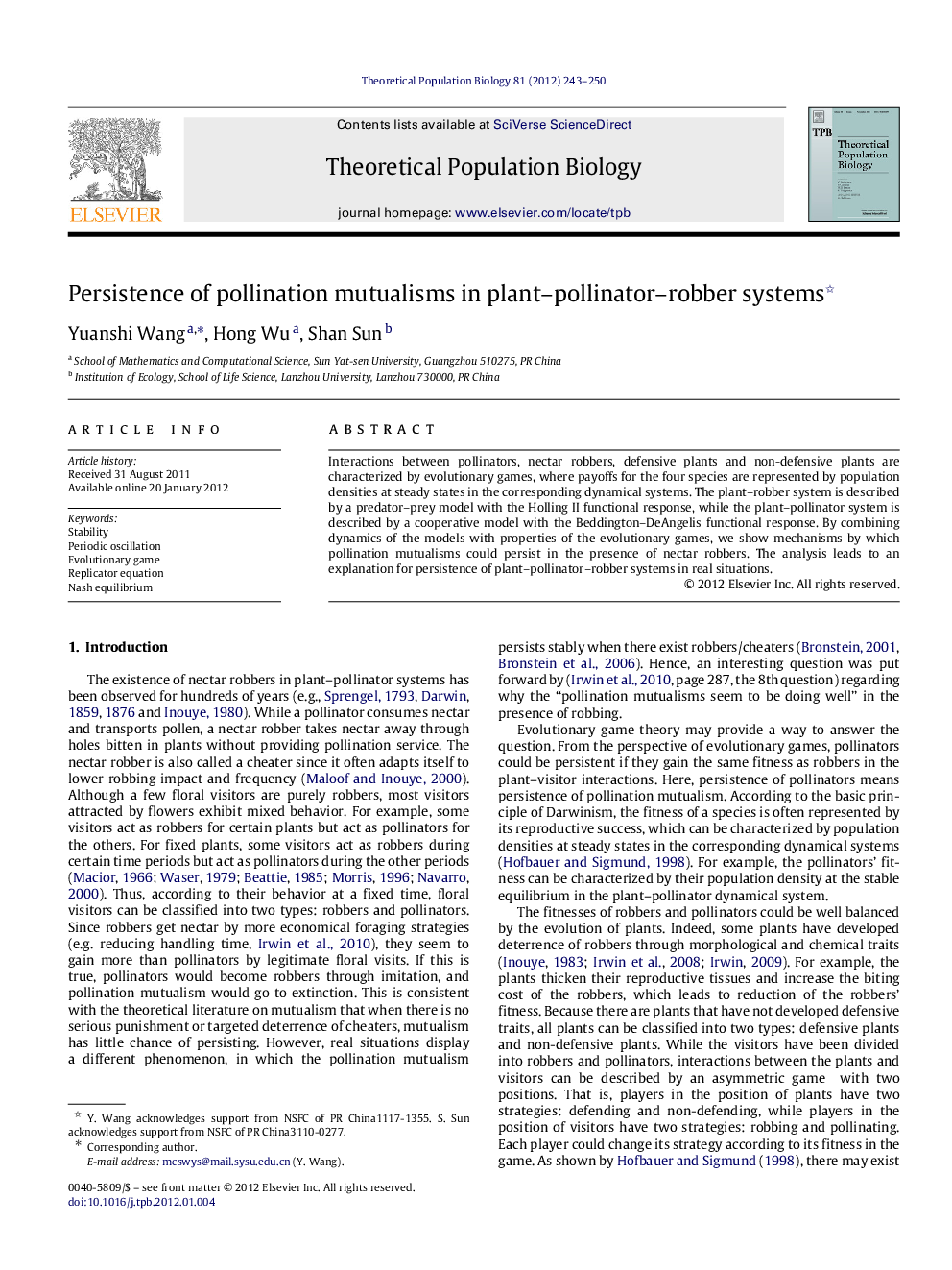| Article ID | Journal | Published Year | Pages | File Type |
|---|---|---|---|---|
| 6372427 | Theoretical Population Biology | 2012 | 8 Pages |
Interactions between pollinators, nectar robbers, defensive plants and non-defensive plants are characterized by evolutionary games, where payoffs for the four species are represented by population densities at steady states in the corresponding dynamical systems. The plant-robber system is described by a predator-prey model with the Holling II functional response, while the plant-pollinator system is described by a cooperative model with the Beddington-DeAngelis functional response. By combining dynamics of the models with properties of the evolutionary games, we show mechanisms by which pollination mutualisms could persist in the presence of nectar robbers. The analysis leads to an explanation for persistence of plant-pollinator-robber systems in real situations.
